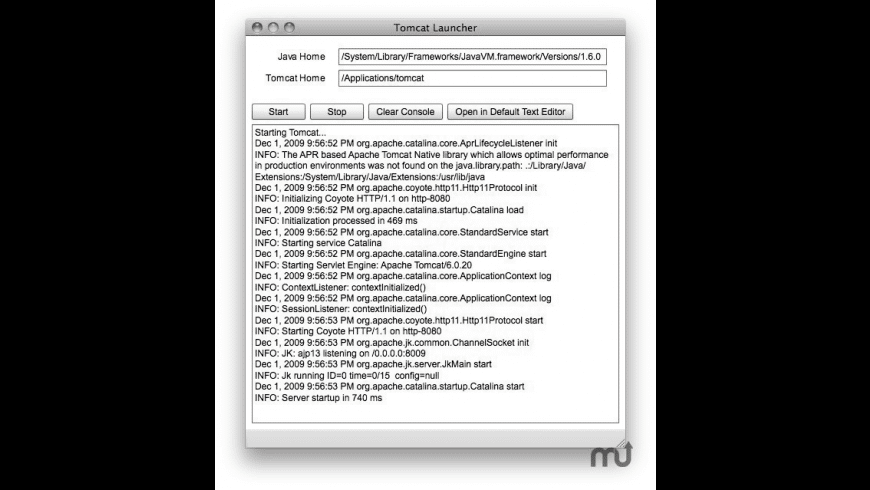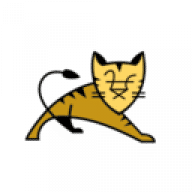I mainly do web development on my 15 in Macbook Pro. Mac runs on base Unix foundation so mainly you could install almost all Linux/Unix software on Mac very easily.
Mac OS X comes by default with ApacheWeb Server and PHP. In this tutorial we will go over steps on how to enable those on Mac.
Apache Tomcat 8.0 Download Mac
Let’s get started:
Enable Apache Web Server
Step-1
Open terminal App and run below command:
Select the component you wish you download to view its current or previous release downloads: ActiveMQ 5. ActiveMQ Artemis. Step 1: Download Tomcat Download Jakarta Tomcat from the Tomcat home page, and get the binary version - Idownloaded jakarta-tomcat-5.0.27.tar.gz. Extract the files (unless your browser automatically extracts them). Navigate (using the Finder) to Macintosh HD Library. Apache Traffic Control; Tomcat; APR. Historical releases, including the 1.3, 2.0 and 2.2 families of releases, are available from the archive download site. Apache httpd for Microsoft Windows is available from a number of third party vendors. Stable Release - Latest Version: 2.4.46. Apache Tomcat HTTP Server. Apache Tomcat is a Java-capable HTTP server, which could execute special Java programs known as 'Java Servlet' and 'Java Server Pages (JSP)'. Tomcat is an open-source project, under the 'Apache Software Foundation' (which also provides the most use, open-source, industrial-strength Apache HTTP Server). Apache Tomcat 4.x is available for download from the archives. Apache Tomcat 4.x implements a new servlet container (called Catalina) that is based on completely new architecture. The 4.x releases implement the Servlet 2.3 and JSP 1.2 specifications. Apache Tomcat 4.1.x is a refactoring of Apache Tomcat 4.0.x, and contains significant.
Step-2
Open browser and check with URL: http://localhost
Enable PHP Module and verify Perl module
Step-1
Open Terminal App. Mac OS X comes by default with Perl library. Just type below commands to check Perl and PHP Setup.
2 4 6 8 10 12 14 16 18 | /usr/bin/perl bash-3.2# pwd total120 -rw-r--r--1root wheel13077Sep92014magic drwxr-xr-x14root wheel476Sep92014extra -rw-r--r--1root wheel20786Sep92014httpd.conf -rw-r--r--1root wheel20786Jun913:55httpd.conf.bak bash-3.2# vi httpd.conf |
Step-2
Open file httpd.conf file. You may use any Text Editor also.
Uncomment the following line (remove #): LoadModule php5_module libexec/apache2/libphp5.so
Step-3

Restart Apache Web Server:
Step-4
- Find
DocumentRootfromhttpd.conffile. In my case it’s/Users/crunchify/Documents/Blogs/MAMPas I’m using MAMP on my Mac. - You may have diff folder something like
/Library/WebServer/Documents/. - Create below file
crunchify-php-on-mac.phpunder your DocumentRoot folder. - If you don’t see folder
Web Serverthen just create it 🙂
2 4 6 8 | <head> </head> <?phpecho'<p>Hello World - PHP Testcase on Mac OS X by Crunchify.com...</p><br>Have a fun.. Enjoy..';?> </html> |

Step-5

Now visit this URL: http://localhost/crunchify-php-on-mac.php and you should see php file loaded successfully on browser.
How to Kill Apache httpd process on Mac?
Just incase if you need to kill apache httpd process on Mac then you could use below commands.
2 | sudo launchctl unload/System/Library/LaunchDaemons/org.apache.httpd.plist |
Enjoy and Happy coding…
Join the Discussion
Apache Tomcat 64 Bit
If you liked this article, then please share it on social media or leave us your comments. Limited time 3 months free WPEngine hosting.

Apache Tomcat 9 Mac Download
Other Popular Articles...
